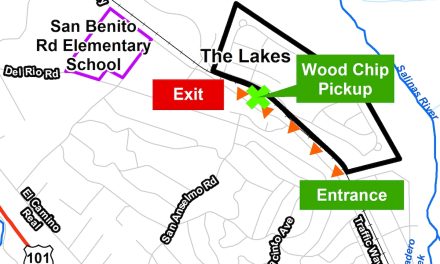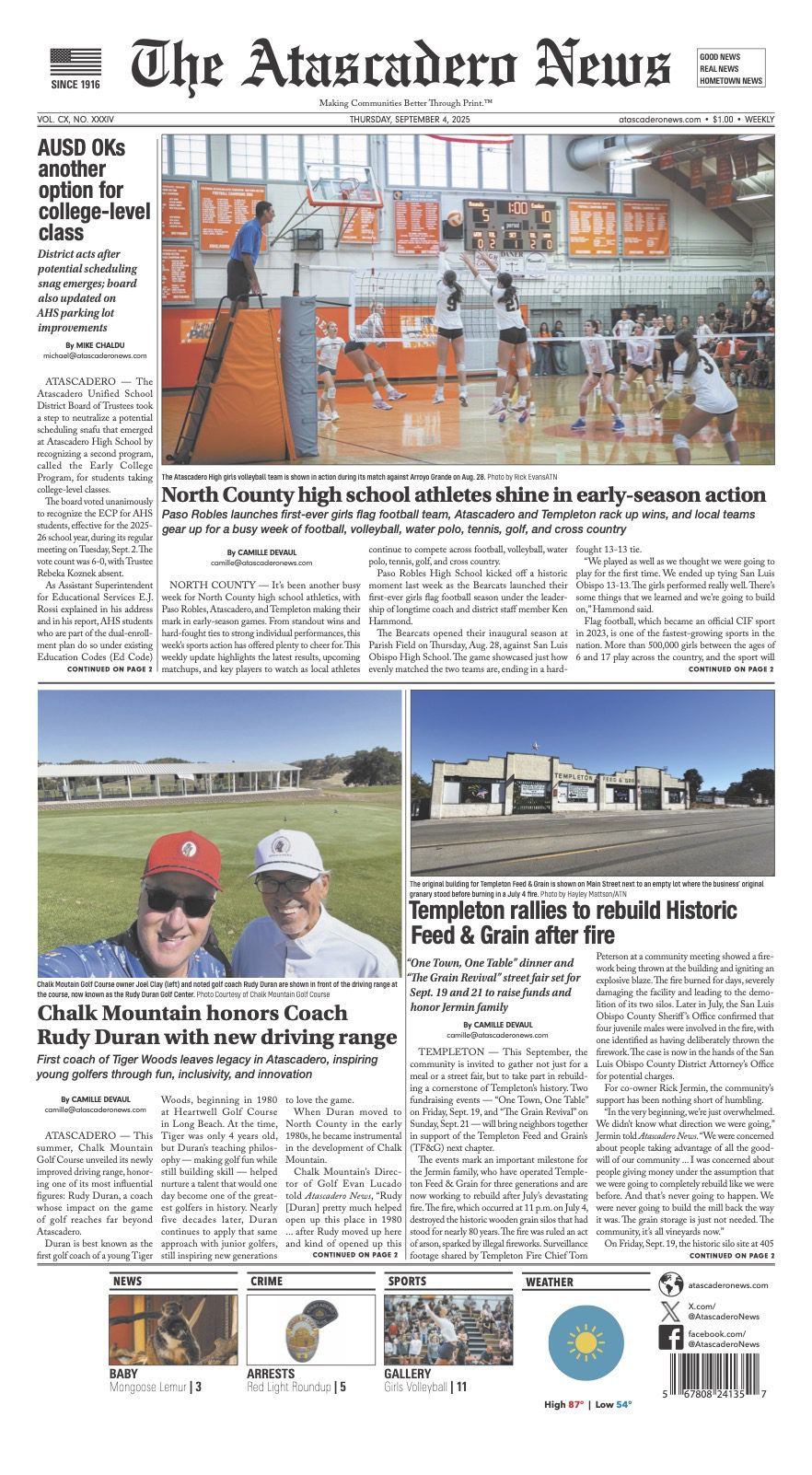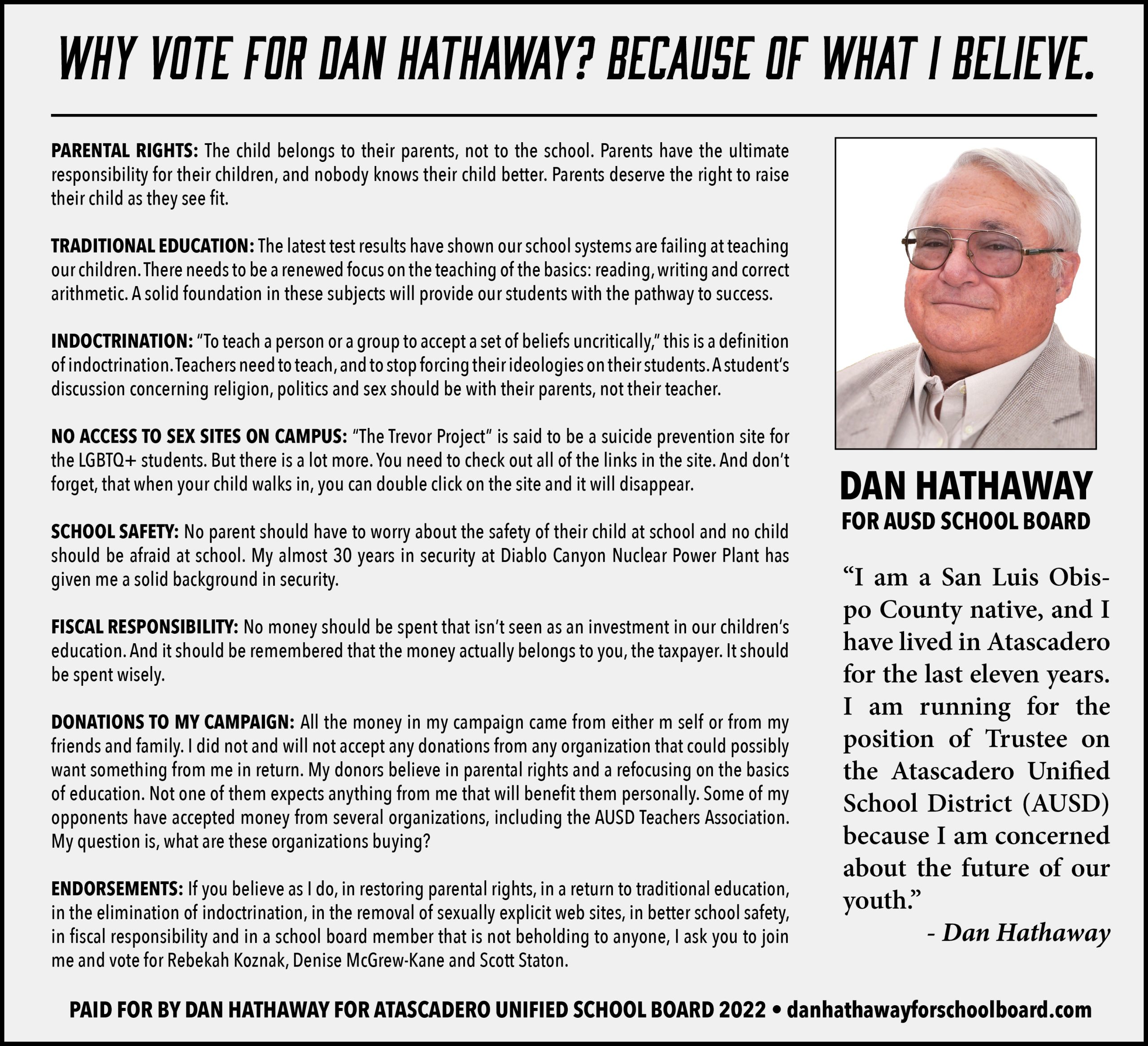Council also reaches consensus on Propostion 36 support and increase enforcement of ‘feather flags’
ATASCADERO — The Atascadero City Council held its regular meeting on Tuesday, Sept. 10, and voted to move forward with the official closure of the Millhollin Mine property.
The council conducted the meeting as a panel of four due to the absence of Councilmember Heather Newsom.
The Millhollin Mine property was the only Public Hearing on the agenda for the meeting.
As explained by Community Development Director Phil Dunsmore at the meeting and in the staff report, the mine, located at 11600 Santa Lucia Road, a few miles north of Highway 41 and west of U.S. 101, was established in 1945.Dunsmore said the property was more of a gravel pit, but was classified as a mine.
The city is the lead agency responsible for monitoring reclamation and ensuring that all reclamation plan objectives are attained, including acquiring financial assurances to guarantee the reclamation is completed per the approved reclamation plan.
The mine operations ceased in October 2011, triggering reclamation of the site per the reclamation plan approved in October 1996. In March 2020, the mine’s operator, Glen Millhollin began the final reclamation activities on the site; however, Milhollin passed away in November 2020, after which the Millhollin family continued efforts in good faith to complete the reclamation activities to the best of their ability which included grading, revegetation, and tree plantings. On May 8 of this year, the city and Department of Conservation, Division of Mine Reclamation (DMR) staff conducted an onsite inspection of the site and determined that substantial site remediation had occurred, both from direct activities and naturalization of the site since cessation of mining activities.
The city, acting as the lead agency, must hold a duly noticed public hearing per the California Code of Regulations, Title 14, Division 2, Chapter 8, Article 11.5, Section 3815 to determine whether the mine operator is financially incapable of completing reclamation, and, if the city so finds, proceed with appropriate action to formally close the mine.
Dunsmore said staff recommended that the City Council approve the closure of the mine, so that the city can work with the state and the operator’s heirs to go forward with the closure and allow the heirs to use the land for something else.
When the floor was opened for questions from council, Councilmember Mark Dariz, alluding to Dunsmore’s mention that the site was zoned residential, asked about the possibility of housing being built on the site.
“I’m wondering how suitable it would be considering it’s a gravel pit,” he asked. “How much work would need to be done to get a building on there?”
Dunsmore answered that he’s been “amazed” at some of the place houses have been built, but pointed out that anyone attempting to build on the site would have to go through the city process of review.
“That’s why we have a construction permit process,” Dunsmore said. “It’s logical someone could figure out how to build on there, but it still needs to go through engineering and environmental review.”
As far as possible liability, Councilmember Susan Funk pointed to a clause in the staff report that stated the condition if “Millhollin’s family, acting as the mine operator’s representative, has verbally communicated … that they are financially incapable of completing the reclamation per the approved reclamation plan.”
“Could we simply, in the [clause] rely on the evidence that the operator has abandoned the mine,” Funk asked. “I think that’s really solid ground to stand on; it’s really clear that has happened.”
Funk proposed changing the language in that clause to say that the operators have actually declared themselves incapable of completing the reclamation.
Dunsmore agreed that would be doable and would clear up the city’s status with the property. City Attorney Dave Fleishmann then pointed out a similar clause earlier in the report that could also be reworded.
Ultimately, Funk moved to approve the closure after the reworded clauses, and council passed the motion with a 4-0 vote.
In other business, under Individual Determination and/or Action, Mayor Heather Moreno proposed the council takes a position on state Proposition 36, which would allow felony charges for possessing certain drugs and for thefts under $950, if defendant has two prior drug or theft convictions.
Prop 36 is looked at as a correction for the passage of Prop 47, passed in 2014, which changed some theft and drug crimes from felonies to misdemeanors.
Councilmember Charles Borbeau said he liked the proposition in general but said that he didn’t look into it too in-depth yet, while Funk was concerned that the proposition was drafted before the state legislation session was over.
However, City Manager Jim Lewis pointed out that a proposal to back Prop 36 at the League of California Cities meeting that he attended was approved above the required two-thirds majority, and assured Funk that they were fully informed of the state legislative actions when considering the proposition.
That satisfied Borbeau and Funk, who agreed they had a consensus to support the proposition.
Also, Lewis sought support for the city to increase enforcement of the so-called “feather flags” used by some businesses in town.
“The signs make the town look trashy,” Lewis said. “I want to be more agressive to get rid of those.”
Lewis added that most of the feather flags were used by new businesses and he was willing to let them be used for the first 30 days of a business while it got more permanent signage, but would crack down after that.
After widespread support from council, Moreno assured Lewis he had consensus to enforce the ordinance.
The City Council will meet next Sept. 24 at 6 p.m.














